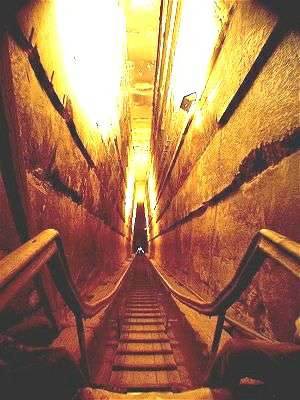Facts about the Pyramids and Rituals of the Ancient Egypt
Built during the time when Egypt was one of the richest and most powerful civilization of the world, the pyramids especially the great pyramid of giza were some of the most magnificent structures in history. Their massive scale reflects the unique role that the pharaoh, or king played in the ancient Egyptian society. Though pyramids were built form the beginning of the old kingdom to the close of Ptolemaic period in the forth century A.D., the peak of pyramid building began with the late Third Dynasty and continued untill the Sixth Dynasty. More then 4000 years later, the Egyptian pyramids still retain much of their majesty, providing the glimpse into the country's rich and glorious history.
 |
| The great pyramids of Giza |
During the third and fourth Dynasty of the Old kingdom, Egypt enjoined tremendous economic prosperity and stability. Pharaohs of Egypt held a unique position in the Egyptian society. Somewhere between humans and divine, they were believed to have been chosen by the gods to serve as a mediator between them and the people on earth. Because of this it was important to keep the Pharaoh's majesty intact even after his death, when he was believed to become Osiris, god of the dead. The new pharaoh, in turn becomes Horus the protector of the Sun God, Ra.
The pyramid's smooth, angled sides symbolized the rays of the sun and were designed to help the Pharaoh's soul ascend to heaven and join the gods, especially the Sun God.
 |
| Burial chamber of a Pharaoh inside the pyramid |
Egyptian believed that when a king died, part of his soul known as "ka" remained with his body. To properly care for his spirit, the corpse were mummied, and everything the king would need in his afterlife was buried with him, including gold vessels, food, furniture and other offerings. The pyramids became the focus of a cult of a dead king that was supposed to continue well after his death. Their riches will provide not only for him, but also for the relatives, officials and the priests who were buried near him.
 |
| Inside the Great Pyramid |
No pyramids are more celebrated then the great pyramid of Giza, located on a plateau on the west bank of river nile, on the outskirts of the modern day Cairo. The oldest and the largest of the three pyramids of Giza, is the only surviving structure out of the framed seven wonders of the ancient world. It was built for khufu, Senferu's successor and the second of the eight Pharaohs of the fourth Dynasty. Though khufu reigned for 23 years (2589 - 2566 A.D.), relatively little is known of his reign beyond the grandeur of his pyramid. The sides of the pyramid's base average 230 meters and it's original height was 147 meters, making it the largest pyramid in the world. The three small pyramids made for khufu's queens are lined up next to the great pyramid and a tomb was found nearby containing the sarcophagus of his mother, queen Hetepheres. Like other pyramids khufu's pyramid is surrounded by rows of mastabes, where relatives and officials of the pharaoh were buried to accompany and support him in the afterlife.



Comments
Post a Comment